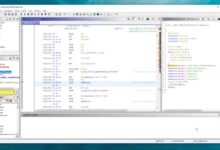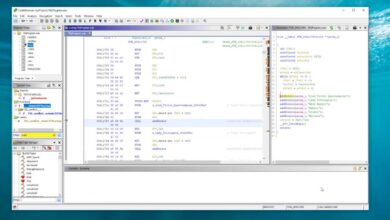🔍 Ghidralite: The Future of Smart Reverse Engineering Tools
In the evolving world of cybersecurity and digital forensics, reverse engineering tools play a crucial role in software analysis, malware investigation, and vulnerability assessment. Among the emerging technologies in this field, ghidralite stands out as a promising advancement inspired by the powerful open-source framework, Ghidra. It brings a lightweight, efficient, and modern approach to understanding complex software systems.
This article explores everything you need to know about ghidralite—its features, advantages, installation process, and how it compares to traditional reverse engineering tools.
🧠 What Is Reverse Engineering?
Reverse engineering is the process of analyzing software to understand its architecture, design, and functionality. Cybersecurity professionals, developers, and ethical hackers often use it to:
- Identify vulnerabilities
- Recover lost source code
- Detect malware behavior
- Improve software security and performance
Tools like IDA Pro, Binary Ninja, and Ghidra have long dominated this field. However, with the introduction of ghidralite, users are now seeking a more optimized and accessible experience.
⚙️ What Makes Ghidralite Unique?
Ghidralite is designed as a simplified, faster, and more resource-efficient version of traditional reverse engineering platforms. It maintains the core power of Ghidra while reducing system load and improving accessibility for students, researchers, and small teams.
Here’s what makes it stand out:
| Feature | Description | Benefit |
| Lightweight Architecture | Consumes fewer resources and runs efficiently on mid-range systems. | Ideal for laptops and portable setups. |
| Cross-Platform Support | Works smoothly on Windows, macOS, and Linux. | Broader usability across diverse environments. |
| Integrated Decompiler | Converts binaries into human-readable pseudo-code. | Helps understand complex assembly logic easily. |
| Script Automation | Supports Python and Java scripting for automation. | Saves time in repetitive analysis tasks. |
| Plugin Compatibility | Integrates with Ghidra-based plugins. | Enhances features without compromising stability. |
| User-Friendly Interface | Simplified UI for easier navigation. | Reduces learning curve for beginners. |
With these capabilities, ghidralite bridges the gap between professional-level reverse engineering tools and user-friendly educational applications.
💡 Why Use Ghidralite for Reverse Engineering?
- Educational Utility
Ghidralite is ideal for computer science students and cybersecurity learners. Its streamlined design allows users to focus on core learning rather than dealing with complex setup configurations. - Efficient Malware Analysis
Analysts can inspect malicious code efficiently without straining system resources. This makes ghidralite perfect for virtual labs or cloud-based security environments. - Enhanced Productivity
The scripting automation and plugin extensions empower users to analyze files faster and automate routine tasks. - Cost-Effective and Open Source
Like its predecessor, ghidralite remains open-source, offering free access to high-end reverse engineering capabilities without licensing costs.
🧩 Ghidralite vs Ghidra: Key Differences
While ghidralite draws inspiration from Ghidra, several distinctions make it appealing for specific users. The table below highlights the key differences:
| Criteria | Ghidra | Ghidralite |
| System Requirements | High (suitable for powerful workstations) | Low to moderate (optimized for mid-tier devices) |
| Interface | Advanced and modular | Simplified for accessibility |
| Learning Curve | Steeper | Easier for beginners |
| Speed | Slightly slower on older systems | Faster and more responsive |
| Customization | Highly configurable | Focused on usability with limited deep custom options |
🧭 How to Install and Use Ghidralite
Installing ghidralite is straightforward and does not require extensive setup:
Step 1: Download
Visit the official ghidralite repository or trusted open-source platform to download the latest version for your operating system.
Step 2: Extract Files
Unzip the downloaded folder and navigate to the main directory.
Step 3: Run the Application
For Windows:
ghidralite.bat
For Linux/macOS:
./ghidralite.sh
Step 4: Load a Binary File
Use the “File → Import” option to load your target binary or executable file. The software will automatically identify architecture and dependencies.
Step 5: Begin Analysis
Explore functions, disassembly, and decompiled code. You can also use the scripting console for custom tasks.
🔐 Common Use Cases
- Security Research:
Cybersecurity professionals can examine malware behavior, uncover hidden payloads, and understand attack vectors. - Software Development:
Developers use ghidralite to debug legacy systems, recover lost code, and assess third-party binaries. - Academic Research:
In universities and research institutions, ghidralite helps teach software architecture, compiler design, and security analysis. - Digital Forensics:
Investigators rely on it to analyze compromised applications and reconstruct digital evidence.
⚡ Performance Optimization Tips
To get the best out of ghidralite, consider the following optimization strategies:
- Allocate sufficient memory in configuration settings.
- Regularly update the plugin library for new features.
- Use SSD storage to accelerate binary loading times.
- Automate repetitive decoding or analysis tasks via Python scripts.
🧑💻 Ghidralite Community and Support
The ghidralite community is rapidly expanding with contributors worldwide. It thrives on collaboration and open-source spirit. Forums, GitHub discussions, and educational YouTube tutorials make it easy for new users to learn and share insights.
The tool’s modularity also allows developers to build extensions, contributing to its continuous improvement.
🌍 Future Scope of Ghidralite
The future of ghidralite looks promising, especially in the field of AI-driven software analysis. Integration with machine learning models could allow the tool to:
- Automatically classify malware
- Suggest decompilation improvements
- Predict vulnerabilities
- Support collaborative cloud-based reverse engineering
As software complexity increases, lightweight and intelligent tools like ghidralite will become even more essential for cybersecurity professionals.
🏁 Conclusion
In summary, ghidralite redefines what it means to have a lightweight yet powerful reverse engineering tool. It provides the efficiency, flexibility, and accessibility that both beginners and experts need. Whether you’re a cybersecurity researcher, software engineer, or digital forensics expert, this tool offers a perfect balance between power and simplicity.
By combining modern design with open-source freedom, ghidralite marks the next evolution in smart reverse engineering—paving the way for a more secure and innovative digital world.
❓ Frequently Asked Questions (FAQs)
What is ghidralite used for?
Ghidralite is a lightweight reverse engineering tool used for software analysis, malware investigation, and code understanding. It helps developers and cybersecurity experts explore binaries efficiently.
Is ghidralite free to use?
Yes, ghidralite is an open-source platform, allowing users to access and modify its features without any licensing costs.
3. Can beginners learn reverse engineering with ghidralite?
Absolutely. Its simplified interface and built-in tutorials make it ideal for beginners who want to learn reverse engineering fundamentals without technical hurdles.
Does ghidralite work on Windows and Linux?
Yes, ghidralite supports multiple operating systems, including Windows, Linux, and macOS, ensuring cross-platform compatibility.
5. How is ghidralite different from Ghidra?
While Ghidra is a full-featured professional tool, ghidralite focuses on speed, simplicity, and accessibility—making it better suited for smaller systems or educational environments.
Is ghidralite safe to download?
Yes, as long as it’s downloaded from the official repository or verified open-source platform. Always verify digital signatures before installation.
7. Can ghidralite analyze encrypted binaries?
It can assist in partial analysis, but additional decryption tools may be required before full inspection of encrypted binaries.
8. Where can I find tutorials for ghidralite?
Tutorials and documentation are available on its official website, GitHub page, and various cybersecurity learning forums.
THE LATEST
SPOTLIGHT
Hot News
- How to Use Ghidra – Complete Beginner’s Guide
- Ghidra Download – The Ultimate Guide to NSA’s Reverse Engineering Tool
- Ghidra: The Open-Source Powerhouse for Reverse Engineering
- Ghidralite: Comprehensive Guide to Ghidra Reverse Engineering Tool
- AI at the Edge: How Edge Computing Is Transforming Artificial Intelligence in 2025
IN THIS WEEK’S ISSUE
-
How to Use Ghidra – Complete Beginner’s Guide

Reverse engineering has become an essential skill for cybersecurity experts, malware analysts,…
-
Ghidra Download – The Ultimate Guide to NSA’s Reverse Engineering Tool

Introduction Cybersecurity professionals, ethical hackers, and software engineers constantly require robust tools…
-
Ghidra: The Open-Source Powerhouse for Reverse Engineering

Introduction In the modern cybersecurity landscape, reverse engineering tools play a critical…
-
Ghidralite: Comprehensive Guide to Ghidra Reverse Engineering Tool

Ghidra is a robust, open-source reverse engineering platform developed by the NSA…
-
AI at the Edge: How Edge Computing Is Transforming Artificial Intelligence in 2025

The integration of edge computing with artificial intelligence is poised to redefine…
-
Quantum Vs Classical: the Next Era of Computing Power Explained

The transition from classical to quantum computing signifies a pivotal shift in…
-
The Human-AI Collaboration Revolution: How Automation Is Redefining Work

The rise of automation has initiated a profound shift in the workplace,…
-
The Rise of Cloud-Native Applications: Building for Scalability and Speed

The emergence of cloud-native applications signifies a crucial evolution in software development…
-
Zero Trust Security: Why It’s the Future of Cyber Defense

Zero Trust Security represents a paradigm shift in cyber defense strategies. By…
AROUND THE WORLD
-
How to Use Ghidra – Complete Beginner’s Guide
Reverse engineering has become an essential skill for cybersecurity experts, malware analysts,…
-
Ghidra Download – The Ultimate Guide to NSA’s Reverse Engineering Tool
Introduction Cybersecurity professionals, ethical hackers, and software engineers constantly require robust tools…
-
Ghidra: The Open-Source Powerhouse for Reverse Engineering
Introduction In the modern cybersecurity landscape, reverse engineering tools play a critical…
-
Ghidralite: Comprehensive Guide to Ghidra Reverse Engineering Tool
Ghidra is a robust, open-source reverse engineering platform developed by the NSA…
-
AI at the Edge: How Edge Computing Is Transforming Artificial Intelligence in 2025
The integration of edge computing with artificial intelligence is poised to redefine…
-
Quantum Vs Classical: the Next Era of Computing Power Explained
The transition from classical to quantum computing signifies a pivotal shift in…
-
The Human-AI Collaboration Revolution: How Automation Is Redefining Work
The rise of automation has initiated a profound shift in the workplace,…
-
The Rise of Cloud-Native Applications: Building for Scalability and Speed
The emergence of cloud-native applications signifies a crucial evolution in software development…
-
Zero Trust Security: Why It’s the Future of Cyber Defense
Zero Trust Security represents a paradigm shift in cyber defense strategies. By…






